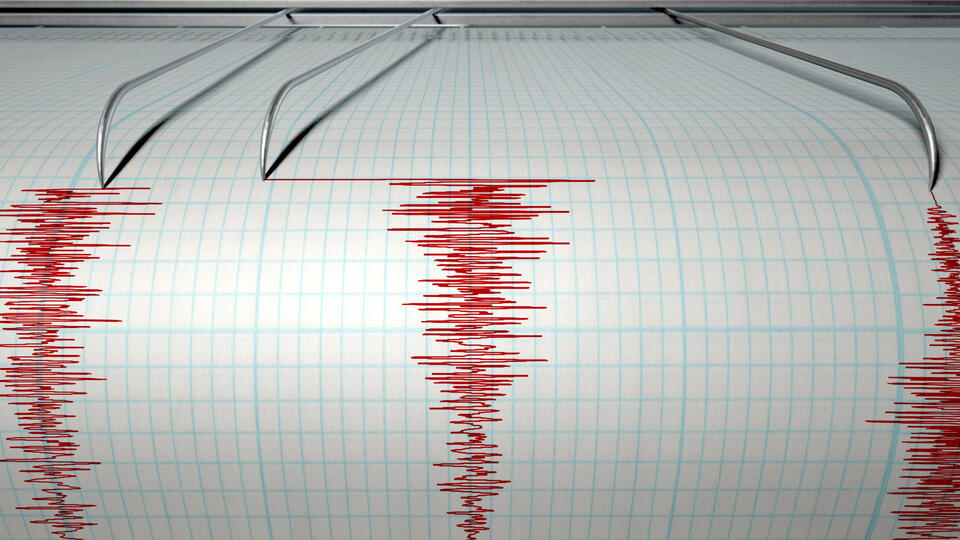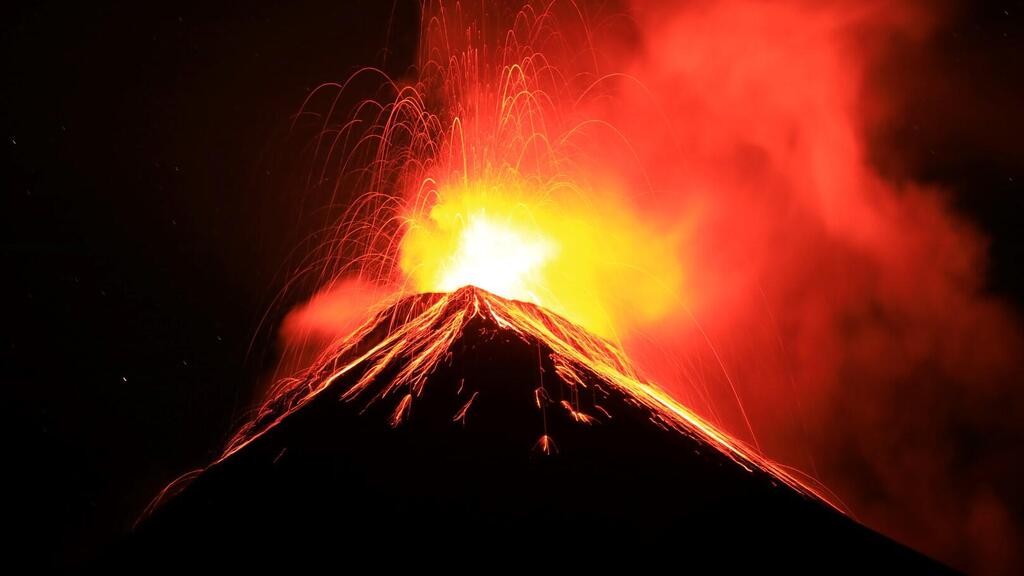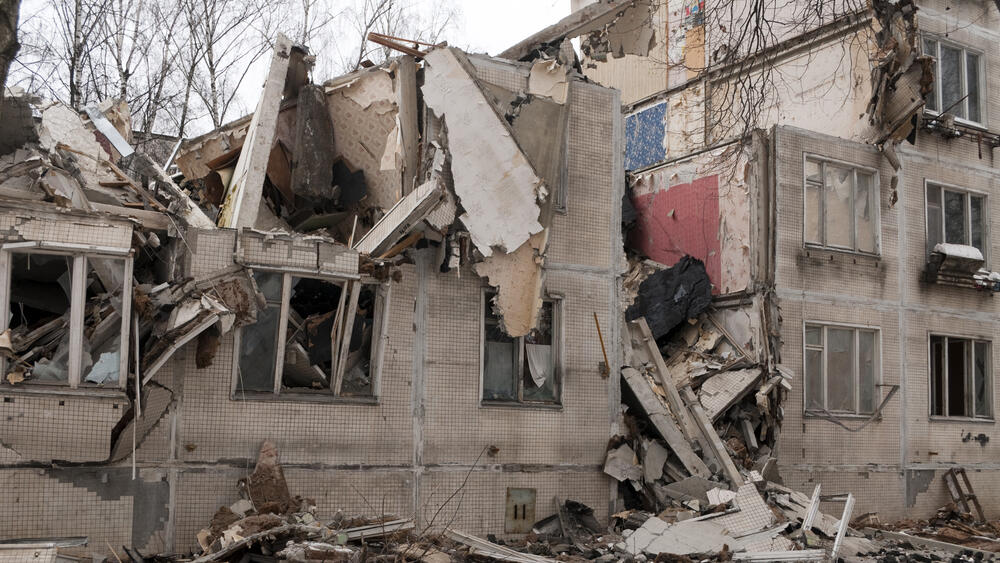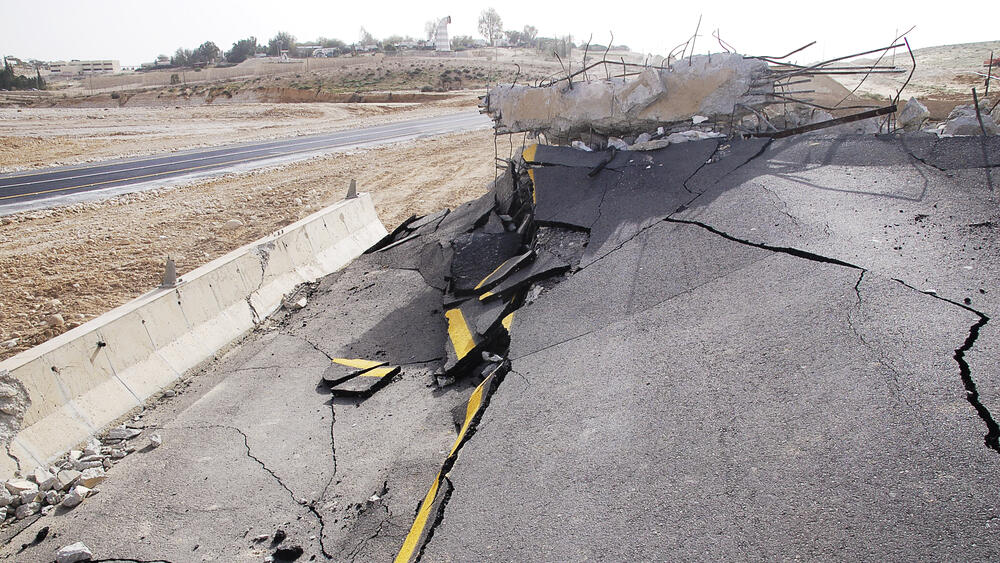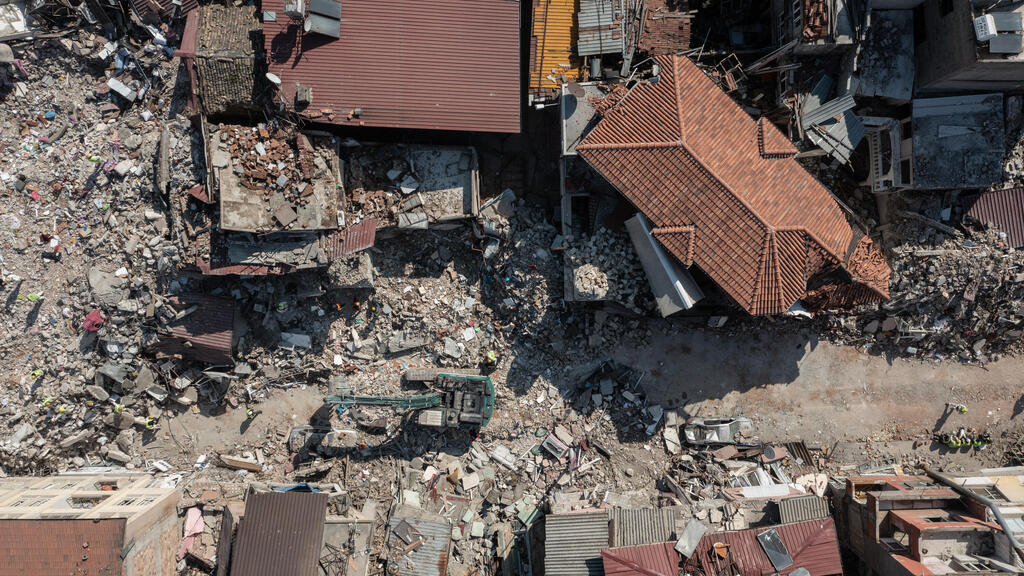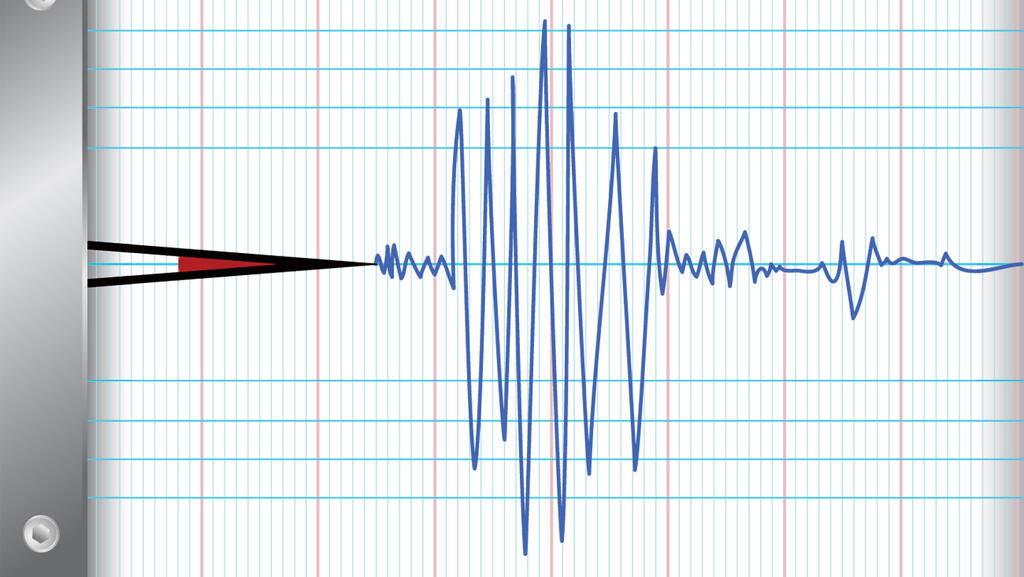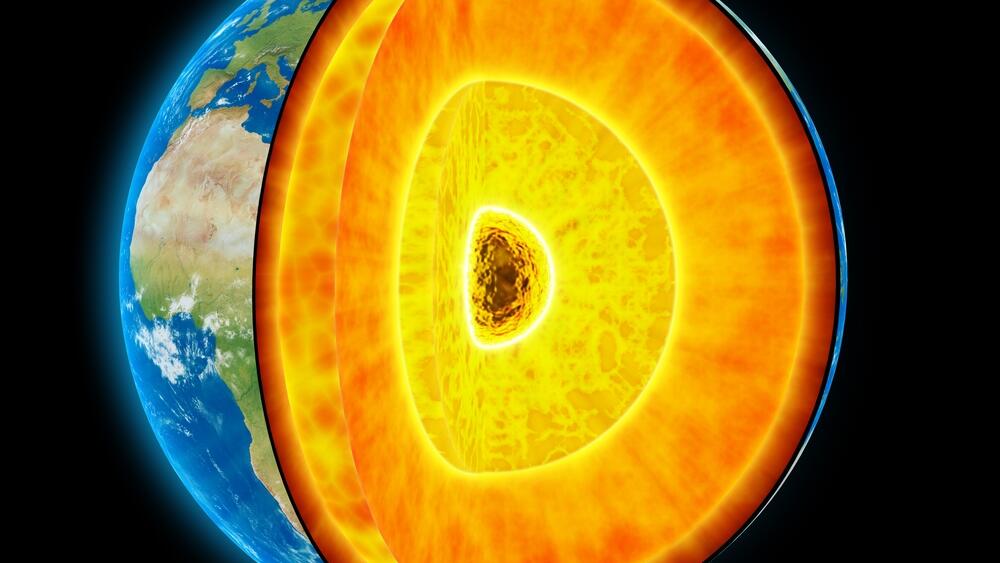Earthquakes are undoubtedly one of the most frustrating natural disasters. From the dawn of civilization, mankind worked hundreds of years to build thriving cities, only to watch them crumble within seconds due to a strong quake that suddenly erupted from the depths of the earth, without any prior warning, retreating to the depths as if it had never occurred.
These disasters, which have been documented throughout history and that occur every few years, represent the rarest and most extreme cases of a much more common phenomenon. About half a million earthquakes of varying intensity are measured around the world each year. Most are too weak for us to perceive, and can be detected only by means of sensitive measuring equipment.
The earthquakes that we do feel are a manifestation of much slower and more extensive movements taking place on the Earth’s surface, serving as an occasional reminder that the planet is not an inert lump of rock.
The scientific advancements achieved in the last century do not yet allow us to predict earthquakes, but they have enabled us to gain a better understanding of the natural processes underlying earthquakes. In some cases we can even employ earthquakes as a tool for studying the secrets hidden in the depths of our planet.
The cause of earthquakes, and the destructive energy they release, lies in the difference in temperature prevailing between Earth’s molten core, where temperatures are estimated to reach over 5000 ℃, and Earth’s crust bordering the cold outer space.
The intense heat emitted from Earth’s center heats the lower part of the mantle, which is the thick layer situated between Earth’s core and the outer crust. Although the mantle is composed of solid rock, over time, the extreme temperature difference between its lower and upper parts creates a cyclic movement pattern.
This movement involves the lower part moving upwards, cooling, and being pushed back down to the depths by a new, hotter mantle taking its place, much like the movement seen in a pot of boiling water.
As the hot mantle moves upwards, the pressure applied to it gradually abates. Just before reaching the surface, the pressure weakens to such an extent that some of the mantle melts into magma, which then erupts through the crust via elongated faults that open up in the seabed.
Once released from the mantle, the magma cools rapidly to form basalt rock that remains on the surface and is continually pushed sideways by younger magma released through the fault.
The extensive basalt plains that form on both sides of the fault are oceanic tectonic plates. These tectonic plates experience a push from the constant melting of the mantle, which drives their movement over the crust. This pushing force is also the primary source of energy for most earthquakes, which are triggered by the friction between adjacent tectonic plates.
Tectonic plates are not uniform structures; instead, they are reticulated by a system of interconnected discontinuities and fractures known as faults. Movement along the length of these faults involves the displacement of one part of a tectonic plate with respect to another.
In most cases, the boundary between two plates is not smooth, and movement taking place along the fault can encounter resistance, resulting in the accumulation of elastic tension between the adjacent plates. If the resistance is suddenly released, as often happens, the accumulated tension is instantly released, producing powerful waves of energy that shake the surrounding tectonic plates. The point at which these energy waves originate is known as the epicenter of the earthquake.
The energy waves released during an earthquake are referred to as seismic waves, after the Ancient Greek word for this phenomenon, and are divided into three main types: primary waves, also known as P-waves, secondary waves or S-waves, and surface waves. Both primary and secondary waves travel throughout the Earth, while surface waves as their name suggests move only along the Earth’s surface without penetrating inwards.
The primary waves are pressure waves, moving longitudinally by pushing particles forwards, in the direction of wave propagation. These particles, in turn, push the particles in front of them and then return to their original position, in a mechanism similar to the movement of soundwaves through the air.
Primary waves travel at a speed of about 24,000 km per hour, which is approximately 1.7 times faster than secondary waves, and they are typically the first waves to be detected by seismic measurement stations.
Secondary waves, the next to be detected by measurement stations, are shear waves that move particles up and down and from side to side as they propagate. Surface waves appear after the secondary waves and cause various mechanical movements, including shear waves, that can reach several centimeters in length.
One type of surface waves, Love waves, cause the surface to move from side to side in a zigzag motion. Another type, Rayleigh waves, causes particles on the surface to complete a circular motion before returning to their original position, similar to the movement of ocean waves. Secondary waves and surface waves are the most destructive types of seismic waves, causing the most damage during earthquakes, as they cause rocks and buildings to sway and shake from side to side.
The primary technique for monitoring, documenting and studying earthquakes is to measure the various seismic waves using a device known as a seismometer (or seismograph). The seismometer detects ground motion beneath it and records the duration, amplitude and frequency of these movements. It also enables us to distinguish between different types of waves.
Early seismometers used a writing implement connected to a weight suspended over a piece of paper. While modern devices are based on electronic components, their operating principle is not significantly different.
Data obtained from a single seismometer enables us to calculate the intensity of an earthquake and its distance from the epicenter, but cannot indicate the direction from which it originated.
Determining the distance between the earthquake and the seismometer is based on the known difference in speed between primary waves, which are detected first by the device, and secondary waves, which are detected after a certain time interval. The time lag between the detection of these two types of waves, along with their respective speeds, enables us to back-calculate the distance.
To determine the epicenter of an earthquake, we need at least three seismometers, positioned at distant geographical locations from each other. After calculating the distance between the earthquake and each of the devices, we can perform triangulation using the three distances to find the exact point around them, and determine the edicenter’s location.
In the past, the intensity of earthquakes was commonly assessed using the Richter scale, which was based on the amplitude of the seismic waves detected by a seismometer. This scale was initially developed to monitor earthquakes in the western United States using a specific type of measuring instrument, and was not ideal for describing earthquakes in other parts of the world.
Nowadays it is more acceptable to describe an earthquake’s intensity using the moment magnitude scale (MMS), which operates uniformly worldwide. This scale takes into account not only the amplitude of seismic waves, but also the rigidity of the soil and the size of the interface area between the two sides of the fault experiencing displacement.
Similar to the Richter scale, the MMS expresses the intensity of an earthquake as a numerical value between 1 to 10. Each unit increase on the MMS scale corresponds to a 31.6-fold increase in the amount of energy released by the earthquake. An increase of two units means a 1,000-fold increase in energy release. Earthquakes may cause damage to buildings at an intensity of 4.0 or higher, and they become particularly dangerous at an intensity of 6.0 or higher.
Unfortunately, there is currently no reliable method for predicting earthquakes in advance. However, a number of countries have implemented systems that are able to detect the moment of onset of an earthquake and thus provide a few tens of seconds of advance warning to residents of the affected area before the destructive waves of energy hit.
These systems typically consist of hundreds of seismic sensors distributed across the land surface. These sensors detect the primary energy waves, which are not harmful, and which travel faster than the secondary waves that pose danger, thus in fact alerting us of the impending danger. The further away a person is from the earthquake’s epicenter, the more time they will have to prepare.
The warning period is short, usually only a few seconds, but it may allow people to find safer protection within buildings, stop mass transportation systems, turn off heavy equipment, and postpone medical procedures. It is estimated that among the thousands of casualties in the severe Loma Prieta earthquake that hit central California in 1989, about half were injured by heavy falling objects.
The aim of the warning systems is to reduce the number of such injuries. One such warning system that operates in Japan was successful during the severe earthquake that hit the country in 2011, which among other things, caused a tsunami and a malfunction in the Fukushima nuclear power plant. The early detection provided by the warning system contributed to the fact that no train derailments occurred and prevented many more injuries.
Developing earthquake warning systems is a complex task that requires significant investment in infrastructure. For instance, the establishment of the ShakeAlert system that has operated since 2019 along the western coast of the USA, took 15 years and cost around 60 million dollars. This system is capable of sending real-time earthquake warnings directly to your phone via the designated MyShake app.
Google has taken the concept of using mobile phones as earthquake warning systems one step further, by installing in the operating system of every Android device a program that can detect earthquakes using the phone’s built-in technology, eliminating the need for ground-based sensors. The program makes use of the accelerometer, installed in almost every smartphone, turning the device into a seismic sensor.
When more than one hundred devices in a particular area simultaneously detect movements that correspond to an earthquake, the program sends a warning to all Android devices in that area. The system is still in its experimental stages and currently operates only in Greece and New Zealand.
While we cannot predict earthquakes, we can take measures to prepare for them in advance by using construction methods that increase the resistance of buildings to strong seismic movements. One common approach is to isolate the base of the building from the soil underneath it by a combination of rubber components or large springs, which prevent the transfer of elastic energy from the ground to the building.
Usually, the guiding standard for earthquake resistant building design does not strive to completely prevent damage, but rather to reduce it as much as possible in order to prevent the loss of human lives. In Israel, the Israeli Standard for Earthquake Resistance came into effect in 1980.
For many of us, earthquakes often evoke thoughts of danger, but beyond their destructive power, earthquakes also offer valuable information about the internal structure of our planet, due to the unique energy waves released during their occurrence. Seismology, the scientific field that studies earthquakes, is fundamental in investigating the internal structure of Earth, as well as of other planets and celestial bodies such as the Moon or Mars.
The intensity and direction of propagation of energy waves change according to the density and elasticity of the materials through which they pass through, much like the way light waves “break” when passing from air to water. Earth’s interior consists of distinct layers that differ from one another in their density and state of matter.
As seismic waves move from one layer to another inside Earth, they change direction and speed and continue to move until they reencounter Earth’s crust, where they are detected by measurement stations.
Cross-checking between the location and time at which the waves are detected in different locations on the surface, and the location of the earthquake’s epicenter, enables us to calculate the path traversed by the waves through Earth and obtain information about its internal layers.
Thus, for example, in 1926 researchers discovered that Earth’s core is liquid. British seismologists Richard Dickson Oldham and Harold Jeffreys reached this understanding when they observed a secondary wave “shadow” forming around the point opposite to the earthquake epicenter, on the other side of Earth.
This region experienced only the primary waves released by the earthquake, unlike every other point on the planet, where both types of waves were detected. Since shear waves, like secondary waves, do not pass through liquids, but pressure waves do, the researchers concluded that there must be a liquid medium at the center of Earth.
Ten years later, in 1936, Danish seismologist Inga Lehmann discovered the existence of a solid core at the center of Earth’s liquid core, now known today as the inner core.
Today, Earth’s surface is equipped with tens of thousands of seismic sensors of various types, which generate vast amounts of data. The richness of information that is obtained following the earthquakes that hit the surface unceasingly, allows us to study Earth’s interior with unprecedented accuracy.
The use of methods from the field of seismic tomography enables geologists to map Earth’s interior and produce 3D models of local structures inside the mantle and core, such as hotspots and sunken tectonic plates, expanding our understanding of the processes that occurred throughout our planet’s history.
Content distributed by the Davidson Institute of Science Education


